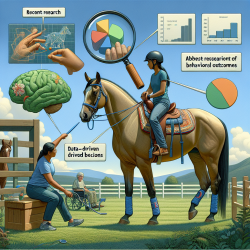Introduction
As climate change continues to reshape our environment, the implications for outdoor sports, particularly in regions like Texas, are becoming increasingly significant. The research article "Increasing Health Risks During Outdoor Sports Due To Climate Change in Texas: Projections Versus Attitudes" highlights the growing concern of extreme heat and its potential impact on student athletes. This blog aims to provide practitioners with insights and strategies to enhance their skills in adapting to these changes, ensuring the safety and well-being of student athletes.
Understanding the Research
The study conducted by Dee et al. (2022) employs climate simulations and surveys to project future heat trends in Texas and assess the attitudes of athletic staff towards climate change. The findings reveal a projected increase in heat indices beyond safe limits for outdoor sports activities by the mid-to-late 21st century. While most athletic staff acknowledge the need for changes to prevent heat-related illnesses, a portion still underestimates the risks associated with climate change.
Implementing Research Outcomes
To effectively safeguard student athletes, practitioners can implement several strategies based on the research findings:
- Enhanced Education and Training: Conduct workshops and training sessions for coaches and athletic staff to increase awareness of the risks associated with extreme heat and the importance of climate adaptation strategies.
- Policy Development: Collaborate with school administrations to develop and implement policies that prioritize student safety, such as adjusting practice times, durations, and locations based on weather conditions.
- Monitoring and Response Systems: Establish systems to monitor weather conditions and heat indices in real-time, enabling quick decision-making to modify or cancel activities as necessary.
- Hydration and Cooling Strategies: Ensure the availability of hydration stations and cooling areas during practices and games to prevent heat-related illnesses.
- Community Engagement: Engage with parents, students, and the community to foster a collective understanding of climate change impacts and the measures being taken to ensure safety.
Encouraging Further Research
While the study provides valuable insights, further research is essential to refine adaptation strategies and ensure their effectiveness. Practitioners are encouraged to collaborate with researchers and institutions to explore additional areas such as:
- Longitudinal Studies: Conduct long-term studies to track the effectiveness of implemented strategies and make data-driven adjustments.
- Technological Innovations: Investigate the role of technology in monitoring environmental conditions and enhancing communication during sports events.
- Behavioral Studies: Explore the psychological aspects of climate change adaptation among athletes and staff to develop comprehensive training programs.
Conclusion
As climate change continues to pose challenges, it is imperative for practitioners to embrace proactive measures to protect student athletes. By implementing the research outcomes and encouraging further exploration, we can create a safer environment for outdoor sports. To read the original research paper, please follow this link: Increasing Health Risks During Outdoor Sports Due To Climate Change in Texas: Projections Versus Attitudes.










